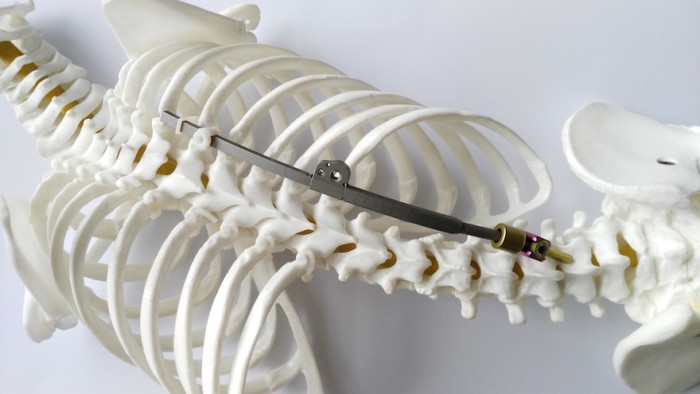Overview of surgery
Surgery for the correction of spinal deformities is indicated when the deformity (curve) is progressive (worsening) or is likely to worsen, when the curve is more than 50 degrees at presentation during the growing years and when the curve is causing compression of the spinal cord or nerve roots. The surgery may be performed from the back of the spine (posterior surgery) or the front of the spine (anterior surgery - through the chest or abdomen) or a combination of a font and back surgery. The aim of the surgery is to stop progression (worsening) of the deformity and to obtain a balanced spine (head is straight above the buttocks and the shoulders are at the same level) with as much correction of the deformity as is safely possible.

Steps of the surgery
There are various surgical techniques and approaches for the correction of spinal deformities. These procedures are tailored to the individual needs of the patients taking into consideration the age, severity of the deformity and general health of the patient. Please discuss the procedure in detail with your treating surgeon.
The Success Rates and Outcomes
Scoliosis and kyphosis surgery covers a whole spectrum of deformities with different outcomes and complications. It is not possible to state the outcomes and success rates. It varies from patient to patient.
Your pathway to recovery
Following surgery, the patient will be moved to the recovery room. Adequate pain relief and intravenous fluids will be provided. When the patient is comfortable, he/she will be transferred to a high dependency ward for an overnight stay for more personalized attention.
Most patients will be encouraged to walk after 48 hours after surgery with or without a back brace. Normal diet or a soft diet is usually advised either in the evening after the surgery or the next morning
The duration of stay in the hospital may extend from 5-7 days depending on comfort and ability to walk and the surgeon will decide on the date of discharge.
Complications
Allergic reactions to medications and conditions like pneumonia, stroke or heart attack, though rare and not directly caused by the surgical treatment, may have serious consequences.
Surgical complications can include bleeding, infection, spinal fluid leak, injury to the veins and arteries near the spine, injury to the spinal cord and nerves and its surrounding protective layer (dura). Injury to the spinal cord or the nerves during surgery can result in varying degrees of muscular paralysis, alteration of normal sensations and loss of bowel and bladder control which may be permanent or may recover over a period of time. An injury to the covering layers of the nerves (dura) can result in a leak of spinal fluid and may rarely require a repeat surgery. The bone graft may not heal and fuse the spine (non-union) and may in some instances require further surgery.
A 1-5% incidence of post-operative wound infection is possible despite antibiotics given before and after surgery. Superficial infections can be treated with antibiotics, while deep infections may require a wound wash-out under anaesthesia. The presence of an infection in any other region (urinary bladder, chest and skin) immediately prior to surgery, increases the risk of post-operative infection, so inform your surgeon about this.

